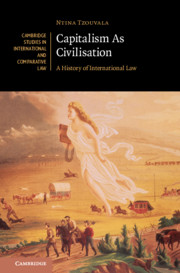(In keeping with an approach that I am trialling at the moment, and the looser format provided by a blog, I have decided to include some pictures; these are intended to complement the text, rather than to illustrate it, and as such, they are left uncaptioned. All of the images are either in the public domain, or have been permitted for non-commercial reproduction.)
*
If my last post, about law as text, started with a statement
of the bloody obvious, I’m not sure there are expletives strong enough to
capture this one: law is about rules. Once again, this was a realization that I
came to very slowly, and that I am still in the process of working out through
a new project, on which I will say more below. But first it is worth reflecting
briefly on why it took me quite so long to understand this apparently simple
point, and what a closer attention to law’s ruliness could yield for the way we
understand medieval law.
Looking at the historiography of medieval law and society
over the last three decades, it is indeed easy to miss the importance of law’s
ruliness. Following the strand of ‘processualist’ legal anthropology developed
in the 1970s and 1980s, medieval historians made a great deal of hay out of the
insight that court cases might just be one stage, or one arena for a much
broader process of dispute resolution. From tenth-century Tuscany to
thirteenth-century England to fifteenth-century France, multiple monographs
have demonstrated the social processes that underlay these resolutions: the
importance of publicity, of reputation, of peace, trustworthiness, and
hierarchy for the working out of conflict, and as such, the way in which these
cultural logics undergirded the operation of the law.
This was very much the broad approach that framed my own
book. Yet when I came to write the introduction – right at the end, of course!
– I began to have some doubts. I was trying to make a point about the ways in
which ordinary people in fifteenth-century England did not just ‘experience’
the law created by others for them, but actively participated in making law for
themselves. I had in mind a particular body of evidence to support this claim. This
was the huge array of ‘bylaws’ that rural tenants made in manorial courts.
These often concerned agricultural matters (‘everyone must ensure their horses
are properly tied up’), but sometimes intervened in social regulation (‘anyone
who slanders their neighbour shall pay a fine’). These bylaws are very well
known to historians. But they have been catalogued as a part of manorial ‘custom’,
a poor cousin to the real law done elsewhere, and there has not been a real study
of them since the 1960s.

I wonder if this is partly because they do not fit the
processualist model very well. While many bylaws clearly seem to have been made
in response to a specific local problem – the escaped horse that damaged crops,
the gossiping neighbour who caused a huge fight – they are also clearly
attempts to bind future behaviour, to make a general rule from a particular
instance. They suggest that rules were not merely a gloss on the social
processes happening ‘underneath’, but a meaningful way in which rural people attempted
to order the world. In the context of the introduction to my book, these were
not problems that I could resolve; instead, I satisfied myself with writing a
good bit about bylaws and rules in my chapter on rural legal culture.
But this problem, I found, was one that others had
identified too. In particular, the ‘Legalism’ group of anthropologists and
historians at Oxford, who ran seminars and workshops and published an excellent
series of books, were elaborating a sophisticated critique of processualist
approaches. I cannot do full justice to this argument here, but it contains the
important insight that rather than treating rules as things which are ‘used’,
often unknowingly, by social actors, and uncovered by clever anthropologists
and historians, we need to take seriously the prescriptions that people make
for themselves. In all societies, people make rules, and these rules betray the
way in which they categorize the world. As such, rulemaking, and the
abstraction that goes with it, needs much closer attention.
I am in the midst of preparing a new project that attempts
to do just this, by examining a huge corpus of rules made by ordinary people in
late-fourteenth-century England. In 1388-9, the royal government asked every
guild – religious associations organized by craft or neighbourhood – to send in
its ordinances for inspection. Still reeling from the mass revolt of 1381,
officials were suspicious of these organizations as potential ‘coventicles’ of political
dissent. Well over 500 guilds from across England obliged, sending in their
rules to the local sheriff, who passed them on to the royal Chancery, where
they were eventually archived.
The ordinances of these guilds follow certain patterns. As
religious associations, they tend to include provisions for things like Masses,
the basic currency of late-medieval Catholic observation, and the great
quantities of wax that were required to leave votive candles burning before
altars. But many of them also include more ‘social’ rules: about what to do if
two brethren fell into a dispute, how debts to the guild were to be repaid, or
what should happen if someone came late to a meeting. By examining hundreds of
them together, I am hoping to identify common patterns in their language and
structure, the mechanisms and penalties by which they were enforced, and the
categories that used to make rules. In so doing, I hope to invigorate an
approach to late-medieval law and society that takes seriously the importance
of ‘ruliness’, and allows us to properly account for the legal ways of thinking
that permeated common life.

-- Tom Johnson
Twitter / @tomlukejohnson
Email / tom.johnson@york.ac.uk






















